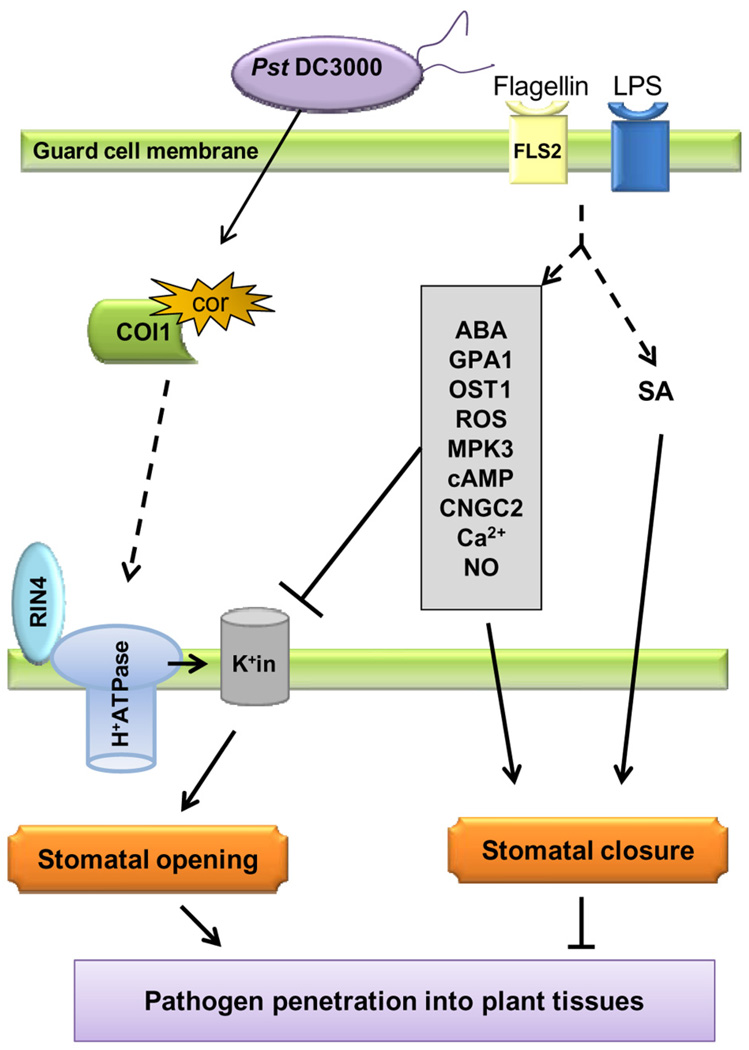Figure 2.
Model illustrating the signaling components and interactions between molecules that have been experimentally demonstrated to be involved in stomatal defense and bacterial counter defense. In the stomatal guard cell, MAMPs (e.g., flagellin and LPS) are perceived by cognate immune receptors (e.g., flagellin receptor FLS2). Perception of MAMPs triggers stomatal closure, which requires the phytohormones SA and ABA, as well as ABA signaling components listed in the grey rectangle (components are listed in order where the top one is the most upstream. Their localization in the cell is not shown). Flagellin also prevents stomatal opening by inhibiting inwardly rectifying K+ channels (K+in) through ABA signaling components (GPA1 and possibly others). COR-mediated inhibition of MAMP-triggered stomatal closure requires the plant proteins COI1 (a COR receptor) and RIN4. While COI1 physically binds to COR, RIN4 binds and activates the proton pump (H+ATPase) causing membrane hyperpolarization and activation of K+ influx (K+in), a condition that promotes stomatal opening. Dashed arrows indicate possibly indirect pathways. MAMPs = microbe-associated molecular patterns; LPS = lipopolysaccharide; SA = salicylic acid; ABA = abscisic acid; COR = coronatine.

